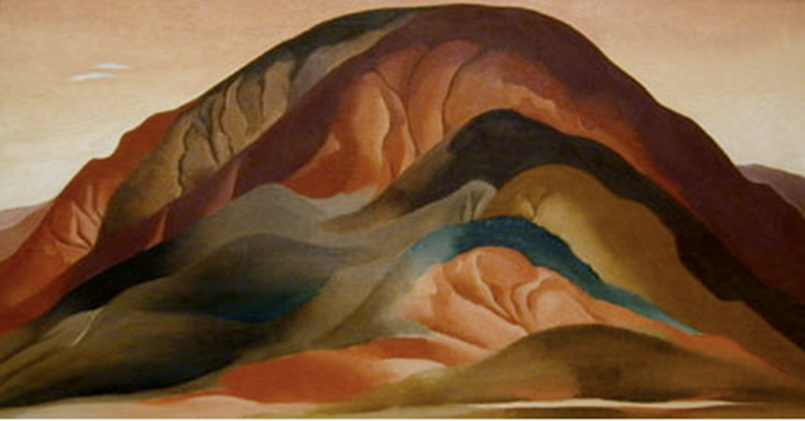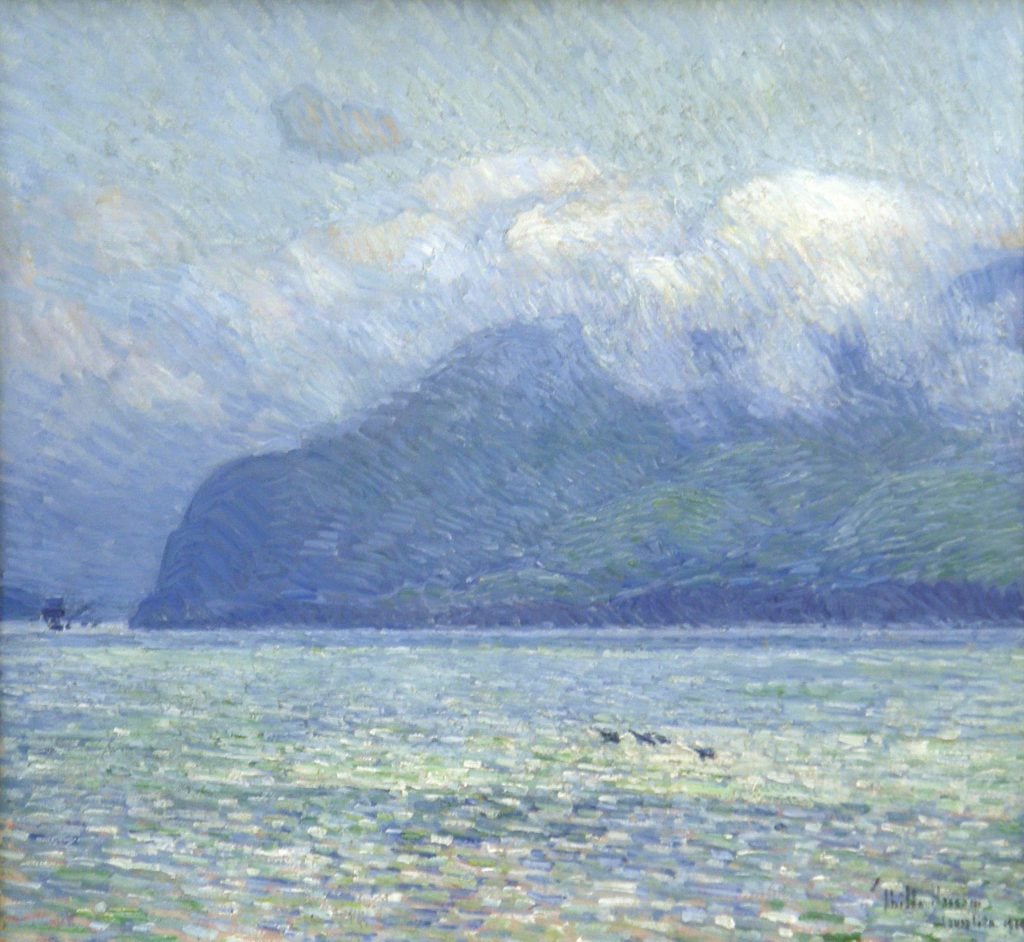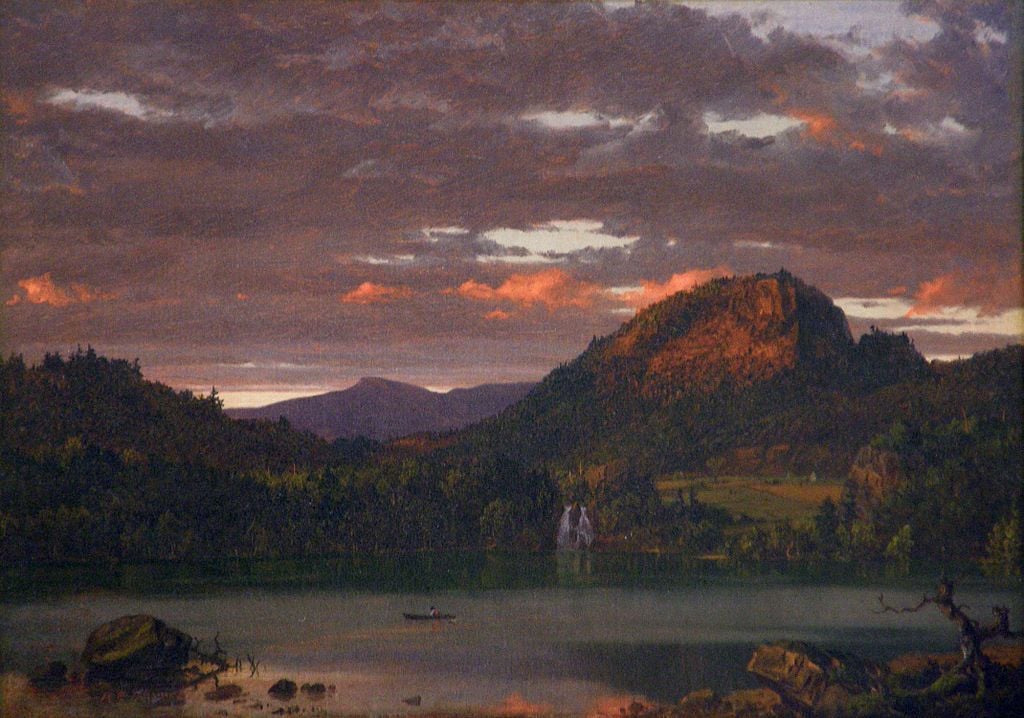05 September 2024
Museums & Institutions
The canvases by O’Keeffe, Church, and Hassam could bring as much as $20 million.

The Brauer Museum of Art at Indiana’s Valparaiso University has been at the center of controversy for a year and a half, as the school has moved to sell three valuable artworks from the museum’s collection to fund improvements to freshman dormitories. The paintings, by Frederic Edwin Church, Childe Hassam, and Georgia O’Keeffe, have been valued in the area of $20 million.
Now, the Porter County Superior Court has approved of the university’s plan, according to a court order dated August 29, reviewed by Artnet News.
This approval “[completes] the due diligence required for the artworks’ sale,” according to an email from university president José D. Padilla to the campus community, forwarded to Artnet News. He added: “As of now, a definitive timeline for the sale has not been established.”
The plan to sell the works was met with an outcry from many in the university community, a lawsuit filed by namesake founding director Richard Brauer, and condemnation of the sale in a joint statement issued by the leadership of the Association of Art Museum Directors, the American Alliance of Museums, the Association of Academic Museums and Galleries, and the Association of Art Museum Curators.

Georgia O’Keeffe, Rust Red Hills (1930). Collection of the Brauer Museum of Art at Indiana’s Valparaiso University.
“This remains a fundamental ethical principle of the museum field, one which all institutions are obligated to respect: in no event shall funds from deaccessioned works be used for anything other than support for a museum’s collections, either through acquisitions or the direct care of works of art,” ` the professional organizations’ statement.
The school’s lawyers, in their petition, claimed that the Brauer is a museum “in name only” because it is not a member of any such organization. The school also maintains that, in view of the dramatic climb in value of the artworks, it does not have the funds to safely display them (which would require security guards) and insure them. And since the donor, the Percy Sloan Trust, dictated that future acquisitions should be of artworks that are deemed “conservative” in nature, the school asserted that the Impressionist Hassam and the Modernist O’Keeffe canvases were inappropriately acquired in the first place, under the guidance of Brauer.

Childe Hassam, The Silver Veil and the Golden Gate (1914). Collection of the Brauer Museum of Art at Indiana’s Valparaiso University.
“Given those circumstances,” ruled magistrate judge Ana Patricia Osan, “the court finds that it is no longer economically or practically feasible to display those three paintings, and that keeping those three paintings in storage would only impair, not enhance, the original purpose of the Trust to utilize the collection, so far as possible, and as is consistent with the general plans of Valparaiso University and to serve and promote conservative art and the causes of art education in a practical and cultural way.
“The court also finds that it would be wasteful to use any proceeds from any sale of those three paintings for the purpose of purchasing more works of art for the collection given that Valparaiso University already lacks the capacity to display the works that it currently has, let alone additional works.”

Frederic E. Church, Mountain Landscape (c. 1849). Courtesy of the Brauer Museum of Art at Indiana’s Valparaiso University.
Brauer expressed his unhappiness at the decision in a statement given to Artnet News.
“I am disappointed the Indiana Attorney General raised no objections to Valparaiso University’s petition to amend Percy Sloan’s trust agreement so as sell Valparaiso University’s three most valuable paintings to renovate freshman dormitories,” he said. “I am disappointed there was no way to challenge any portion of the University’s petition in court without accepting serious financial risk. I am disappointed the court made a ruling that never questioned the University’s petition as we had hoped it would.
“I still hold out hope the President and the Board of Directors will back away from this very dangerous wager,” said Brauer, concluding, “If they do sell the paintings, however, I will ask to have name removed from the museum, as I will be ashamed to have my name associated with this affair.”
The museum abruptly closed in June, just two years after reopening following COVID-related lockdowns in 2020; a re-opening date has not been announced. Director Jonathan Canning, the museum’s sole professional employee, was dismissed along with more than a dozen other university employees in what the school termed a “restructuring.”
Brauer defended himself against accusations of wrongdoing in the school’s petition to sell the paintings, calling them defamatory in a statement to Artnet News. After a long silence, Canning recently broke his silence, calling the university’s decisions into question.
Follow Artnet News on Facebook:
Want to stay ahead of the art world? Subscribe to our newsletter to get the breaking news, eye-opening interviews, and incisive critical takes that drive the conversation forward.
More Trending Stories
This post was originally published on this site be sure to check out more of their content







